Video of the Week:
Cantaloupe: Varieties for Small Spaces
Upcoming Events:
Garden Tour in Kansas City Area
Vegetables:
'Staggering' Sweet Corn Planting
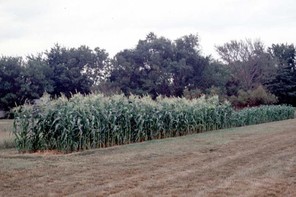
Fruit:
Thinning Excess Fruit
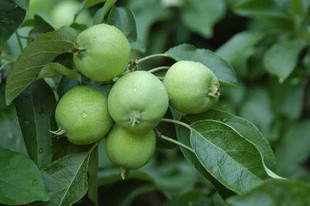
The second benefit of thinning is to promote larger fruit on this year’s crop. Fruit trees are limited in how many fruit they can mature. Too many fruit and fruit size goes down.
A third problem often caused by too many fruit is limb damage. Sometimes the weight of a maturing fruit crop can literally break branches. Thinning will help limit weight and preserve branches.
So how much thinning should we do? Thinning recommendations vary with the type of tree.
Guidelines for fruit spacing are as follows:
Apples and pears: 4 to 6 inches apart;
Peaches: 6 to 8 inches apart;
Plums and prunes: 4 to 5 inches apart;
Apricots: 2 to 4 inches between fruit.
These are averages and so you may have several fruit clustered closer than this distance. As long as the average on the branch is close to the recommended spacing, the fruit should size well. Cherries are not thinned and can produce a full fruit load. (Ward Upham)
Pests:
Cabbage Worms
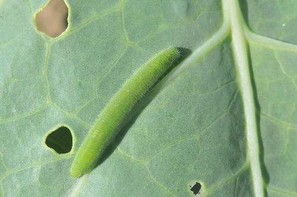
Early control is essential to reduce injury. BT (Bacillus thuringiensis) and spinosad (Borer, Bagworm, Leafminer and Tent Caterpillar Spray; Captain Jack's Dead Bug Brew) are effective organic products that are labeled for this pest. BT can be found in Dipel, Thuricide and other similar materials. Direct sunlight deactivates BT quickly so it is helpful to spray late in the day or on a cloudy day.
Conventional insecticides such as carbaryl (Sevin), malathion and methoxychlor are also effective but will kill natural enemies of these pests. Be sure to hit the underside of leaves where insects feed. Note that hitting the underside of leaves is easier when using a dust applied with a duster than when using a liquid spray. (Ward Upham)
Bristly Rose Slug
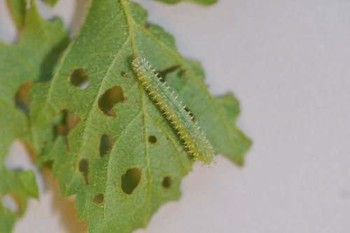
Young larvae will remove the green layer of a leaf leaving behind a clear material. As the larvae mature, they make holes in the leaf and eventually may consume all of the leaf but the major veins.
Since these insects are not caterpillars (larvae of moths or butterflies), BT, found in Dipel and Thuricide will not be an effective treatment. However, a strong jet of water will dislodge the slugs and make it difficult for them to return to the plant. Other effective treatments include insecticidal soap, horticultural oils, spinosad (Fertilome Borer Bagworm, Leafminer and Tent Caterpillar Spray or Captain Jack’s Deadbug Brew) and permethrin (various trade names). (Ward Upham)
Ladybird Beetles
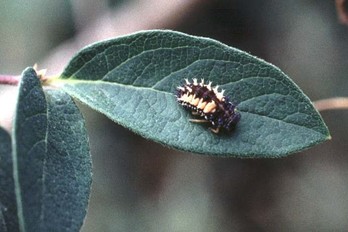
Ornamentals:
Vein Pocket Galls on Oak
We also saw an outbreak of oak leaf itch mites last year. This mite feeds on the larvae of the midge fly that actually causes certain types of oak leaf galls. Though the marginal leaf gall is more commonly associated with oak leaf itch mite, the mite can also feed on the larvae in vein pocket galls. However, a large number of vein pocket galls do not necessarily mean we will have an outbreak of oak leaf itch mite like we had last year. This will be a “wait and see” situation.
Actually, there are hundreds of different types of galls, each of which is caused by a specific insect or mite. Insects that can cause different galls on oaks include tiny, nonstinging wasps and flies which cause abnormal growths to develop on the leaves, twigs or branches of oak trees. The galls caused by mites can include growths that are round, spiny, flattened, elongated or star-shaped.
Galls form in response to a chemical that the insect or mite injects into the plant tissue. Eggs laid by a mature female hatch into legless grubs around which the gall forms. The larvae feed, develop, and pupate inside these galls. The adults may emerge either the same season or may overwinter inside the gall depending on the life history of that specific insect.
Generally, these gall insects do not cause significant damage to their hosts, though some of the leaf galls can cause enough deformity to make a tree unsightly. Also, severe infestations of twig galls can cause twig dieback or, rarely, tree death. However, just because a twig is covered with galls does not mean it is dead. I have seen twigs that looked like a solid mass of galls leaf out in the spring.
Insecticide sprays applied when galls are noticed are ineffective because damage has already occurred. Also, larvae are unaffected because of the protection afforded by the gall. Insecticide sprays can kill emerging adult wasps and flies, but long emergence periods and short residuals of most contact insecticides make this impractical. Stem and twig galls can be pruned if this is deemed to be practical and necessary. Fortunately, natural predators and parasites usually bring these insects under control given a year or two. Therefore, the best option is usually to do nothing.
What about the itch mites? More bad news. We have found nothing can effectively kill or repel these mites. The only means of defense is to avoid contact. (Ward Upham)
Miscellaneous:
Moving Houseplants Outside for the Summer
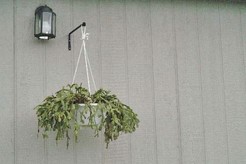
If you have a number of plants, dig a trench 6 to 8 inches deep (or deeper if you have larger pots) and long enough to accommodate all of your plants without crowding. Place peat moss under and around the pots. Peat moss holds water, helps keep the pots cool and reduces evaporation from clay pots. About every two weeks, rotate the pots a quarter turn to break off any roots that have penetrated the peat moss surrounding the pot and to equalize the light received on all sides of the pot. Water as needed. If the potting soil is dry a half-inch deep in the pot, it is time to water. (Ward Upham)
Rabbits in the Garden
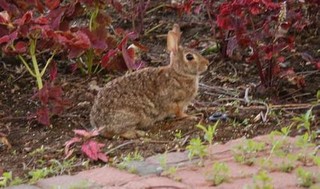
Often fencing is not an acceptable choice because it affects the attractiveness of the garden. Other ways to control rabbits including repellents, trapping and shooting. Repellents are often suggested for control but often do not last long and require frequent reapplication. Also, many are poisonous and cannot be used on plants or plant parts destined for human consumption. Live traps can be used to collect and move the rabbits to a rural area several miles from where they were trapped. A number of baits can be used to entice the rabbit to enter the trap including a tightly rolled cabbage leaf held together with a toothpick. However, rabbits often avoid baits if other attractive food is available.
Another possibility is to use a motion-activated sprinkler. These are attached to a garden hose and release a short burst of water when motion is detected. Contech, Orbit and Havahart are suppliers and each is advertised as protecting up to at least 1,000 square feet. Shooting is another possibility when it is safe and legal to do so. (Ward Upham)
Contributors: Ward Upham, Extension Associate
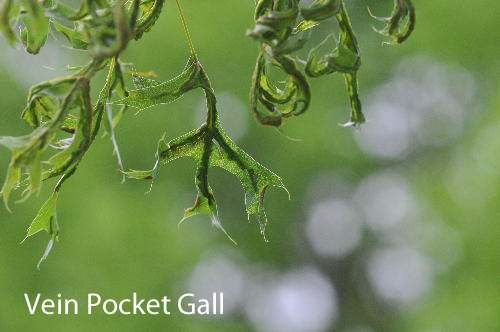
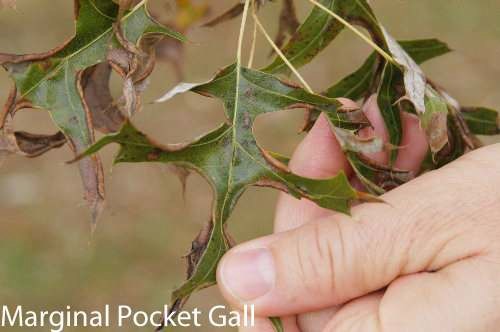
 RSS Feed
RSS Feed
